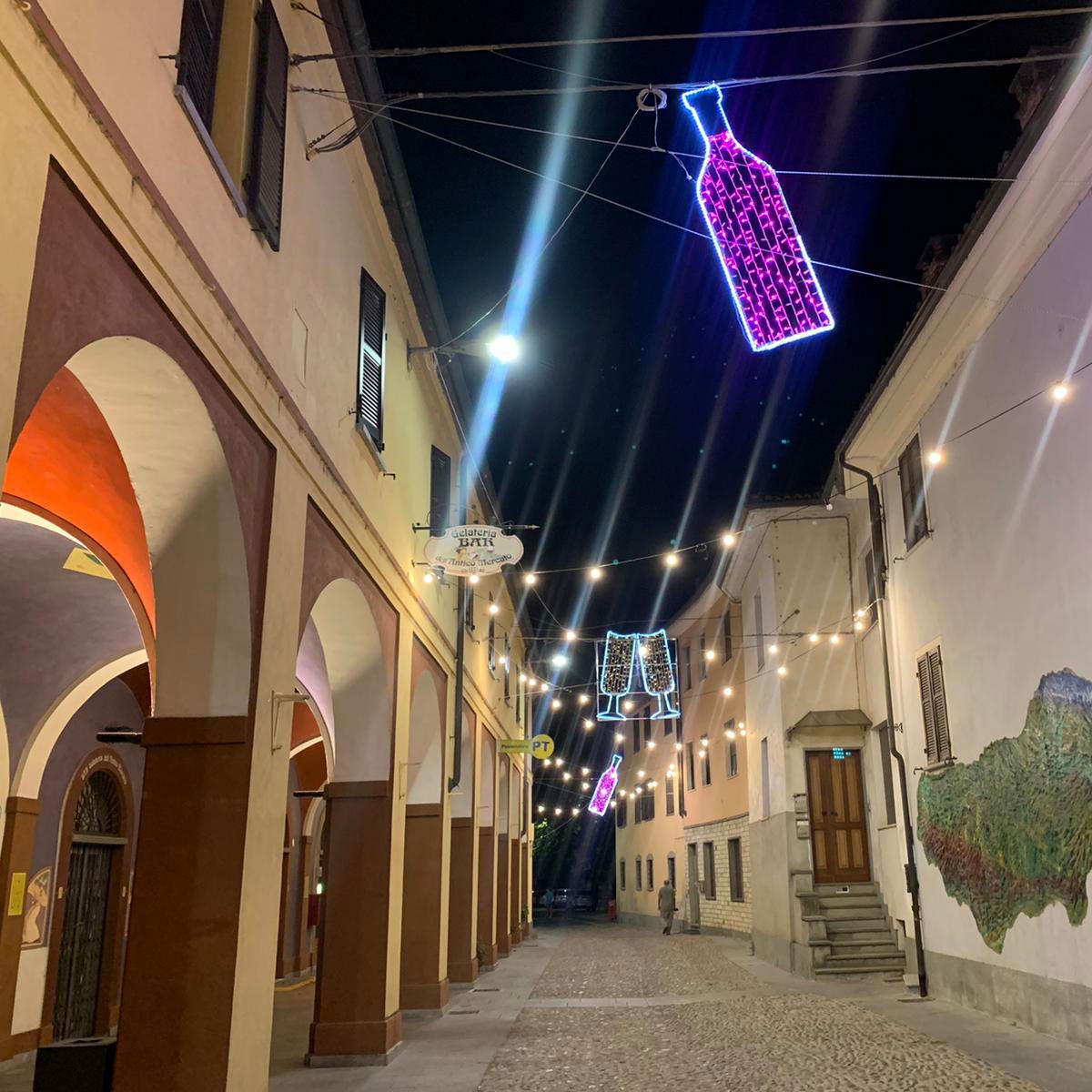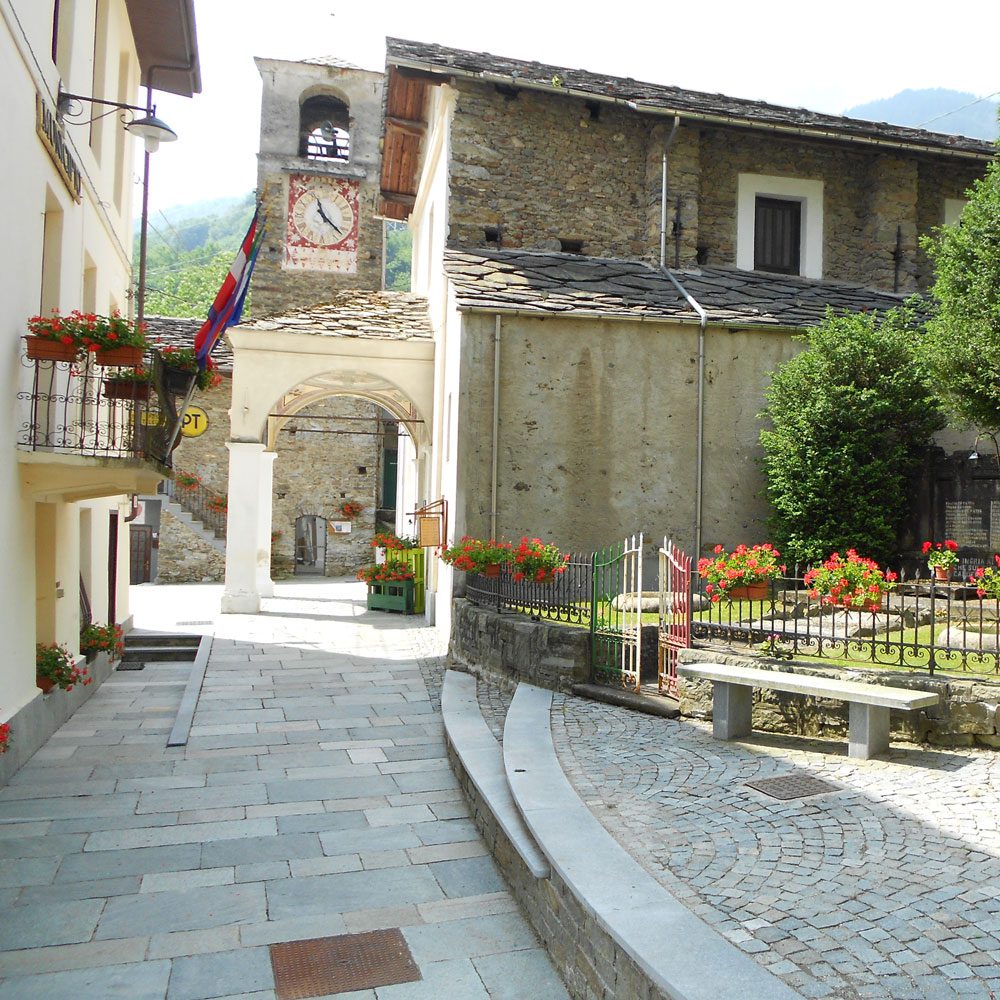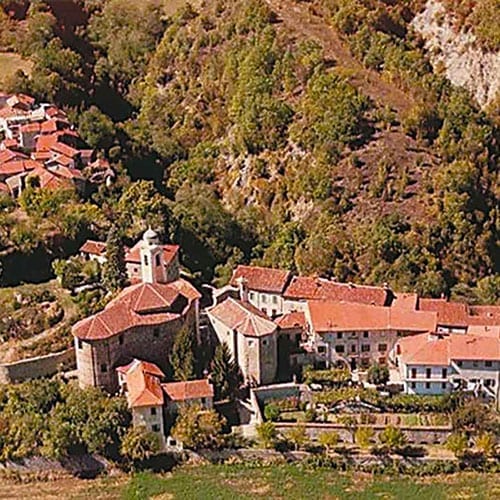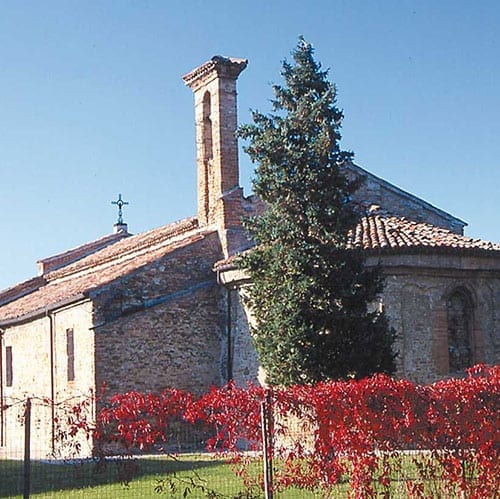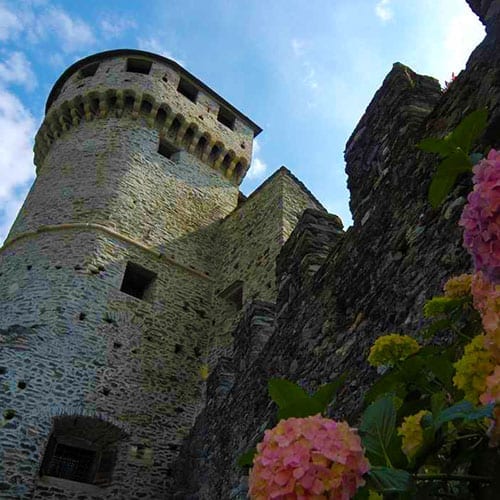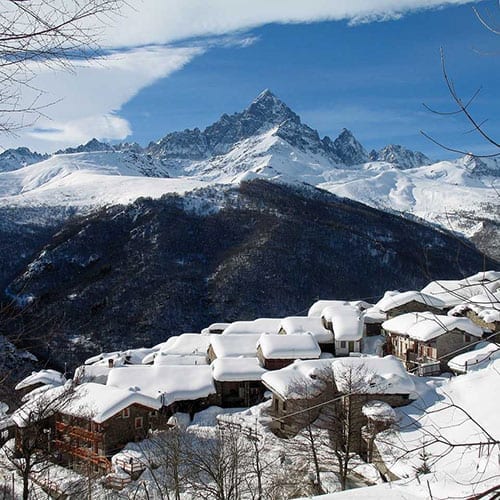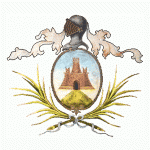 Monforte D’Alba
Monforte D’Alba
MUNICIPALITY OF MONFORTE D’ALBA
(Province of Cuneo)
Altitude
mt. 528 a.s.l.
POPULATION
1995
tourist information
Visit Monforte Tourist Office
tel. +39 3758356711
monforte@tourbante.com
incomingpiemonte.com/destinazioni/monforte
www.comune.monforte.cn.it
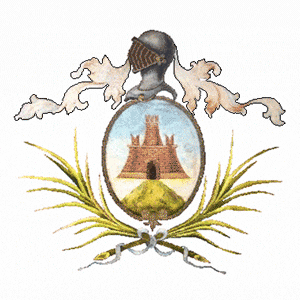 The Name
The Name
The name derives from the castle surrounded by walls that was built in the early Middle Ages on top of the “Mons Fortis“.
The historical centre of Monforte preserves its characteristic medieval plan: the borgo stretches downhill with a fan-shaped layout; the roads that climb follow the lines of maximum slope and are crossed by parallel roads arranged according to the course of the contour lines. A walk through its steep medieval streets, a stop in one of the fine restaurants or hotels, show how this town, already known in the second half of the twentieth century for its gastronomy, has enhanced its historic center with high attention to the restoration and functional recovery of its buildings.
The territory of the City of Monforte d’Alba has some peculiarities that led to its inclusion in June 2014 in the UNESCO “World Heritage Site” as “The wine-growing landscapes of Piedmont: Langhe-Roero and Monferrato”.
The heart of the borgo is the residence of the Scarampi Marquises, located next to the square in which the Auditorium Horszowski was built and where the Bell Tower and the two Confraternities of St. Elizabeth and St. Augustine stand.
Nothing remains of the original castle of Monforte, documented in the 11th century. On the site of the previous castle, seriously damaged in 1703 by the Savoyard troops, who conquered it, the del Carretto lords after 1706 built Palazzo Scarampi, passed to the Savoy State in 1726 with the transfer of the imperial fiefdoms and renovated in 1833.
A small amphitheatre, used as an auditorium and named after the famous pianist who held the opening concert here in the 1986summer, the Auditorium Horszowski hosts the music festival Monfortinjazz.
Going down the “Via dei Catari“, you’ll cross the underpass bearing the date of 1622 on which rested the nave known as the “Manichean” of the ancient church of Santa Maria. Going down via del Carretto, you can see a sundial painted in 1834. Returning to Via del Carretto, you’ll pass, on the right, the ancient Piazza d’Assi, so-called because it is paved with wooden boards and where the market used to be held.
The Oratory of St. Augustine and St. Boniface, in Baroque style, has a brick façade, divided into two orders, and is marked by four pilasters, resting on a base. The bronze portal, created in 2014 by the Swiss artist Marcel Mathys, depicts the Tetramorph (symbol of the four Evangelists with the angel of Matthew, the lion of Mark, the ox of Luke and the ‘eagle of John) and two labyrinths (medieval representations of the path of penance).
The Baroque Oratory of St. Elizabeth is externally shaped as an octagon and has a façade plastered in 1827. Marbled pilasters adorn the interior and a floral decoration embellishes the vault. In the back wall a deep niche houses the altar behind which an important baroque frame encloses the canvas representing St. Elizabeth.
The Bell Tower is the last testimony, together with a fifteenth-century fresco (now in the chapel of the Rest Home), of the parish church of Santa Maria, already mentioned in a document of 1223, and demolished in the second decade of 1900. The bell tower, which has undergone many changes over the centuries, was originally the quadrangular watchtower of the first lords of Monforte, incorporated into the façade of the church built later. The terminal part has the typical characteristics of the Gothic style. During the restoration work, a large niche with baroque decorations emerged at the base, which served as a baptismal font.
Two sundials are still visible in the borgo: the one in Via Del Carretto has, in the centre, a winged hourglass and, at the top, the inscription “VELOCITER TRANSIT” followed by the name of the author “A. CHALLANCE FACIEBAT A.D. 1834”; the other, in via Vallada, on the tower annexed to the former Martina palace, bears the inscription “Soles occidere et redire possunt nobis cum semel occidit brevis lux, nox est perpetua una eterna dormenda” [The sun can set and return for us, when the short light falls, an eternal night remains to sleep]. (Catullus, Carme V).
The Borgo of Monforte d’Alba has a lot to offer, both for what concerns the events that are organized here in the various seasons and for the gastronomy.
The cuisine is an expression of a rural world with a poor economy and still preserves its typicality, although it is affected, in some preparations, by the influence of nearby Liguria and Valle d’Aosta, as in the “bagna cauda” and “fondue”. A wide range of appetizers, first courses, second courses and very elaborate desserts was created from a varied raw material and from the imagination of the chefs, requiring patience and skill in execution. Among the main ones: veal with tuna sauce, raw meat with albese sauce, omelettes, mixed Piedmontese style fried, fondue, “bagna cauda”, homemade pasta (tajarin, ravioli al “plin”, potato gnocchi).
Do not forget the Barolo braised meat, the mixed boiled meat accompanied by the “bagnet verd” and the Langhe Style rabbit with peppers ; the lunch is completed by the “tume“, the “bonet“, the hazelnut cake and the dried meliga pastries with zabajone.
Sovereign, on some of these dishes, the fragrant and precious white truffle of Alba.
Among the events:
the music festival Monfortinjazz in July, now in its 43rd edition. The Monfortinjazz, born in 1976, has hosted many of the most famous and appreciated protagonists of the international music scene giving rise, every year, to a unique event.
On the 4th Sunday of November, the traditional “BERU” (literally “the males of the sheep”) fair is held. Throughout the day, the city center is animated by stalls ready to offer visitors a panorama of all kinds of genres. The Pro Loco prepares for all the breakfast of the Langhe, lunch with polenta and sausage and a snack.





